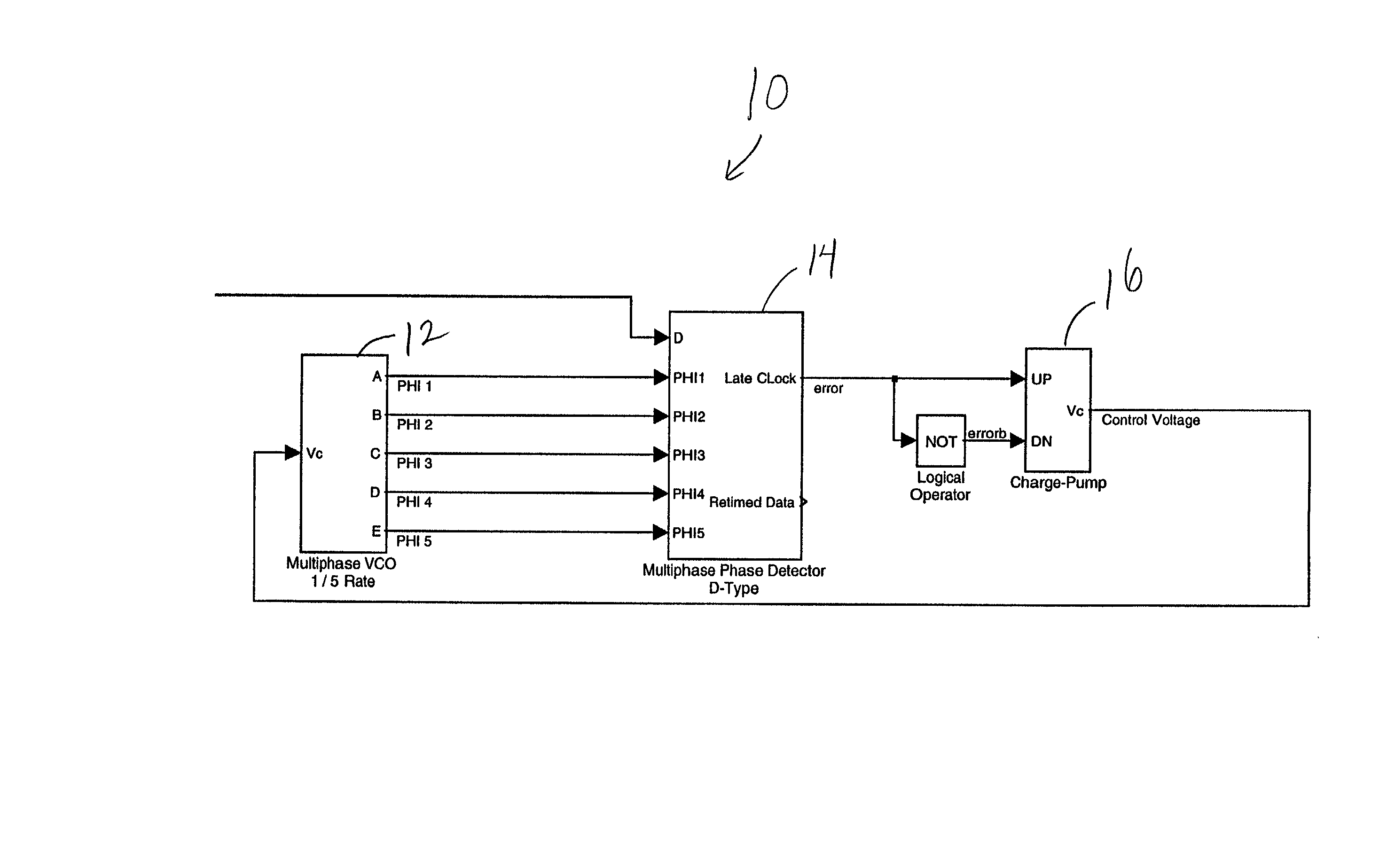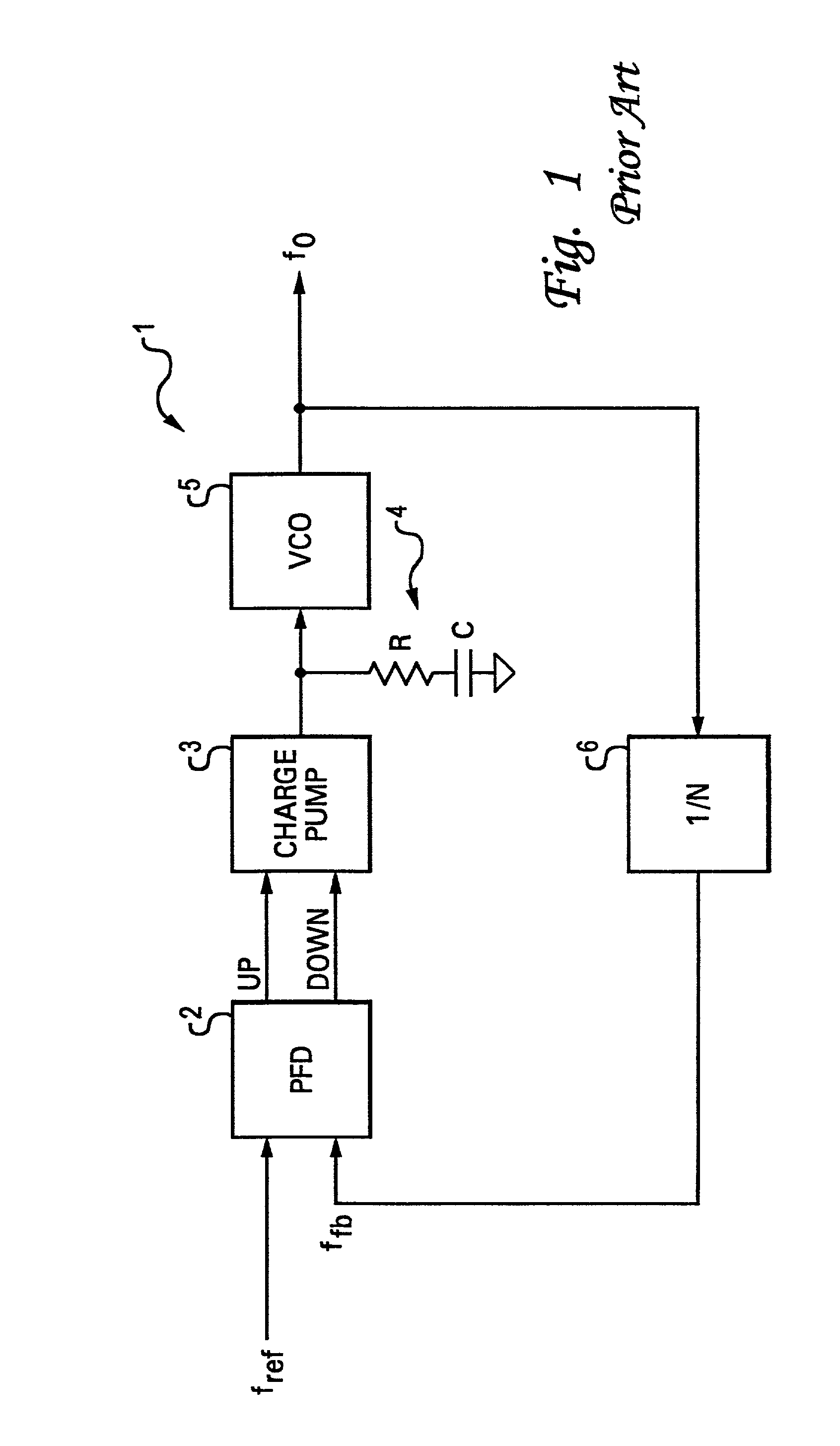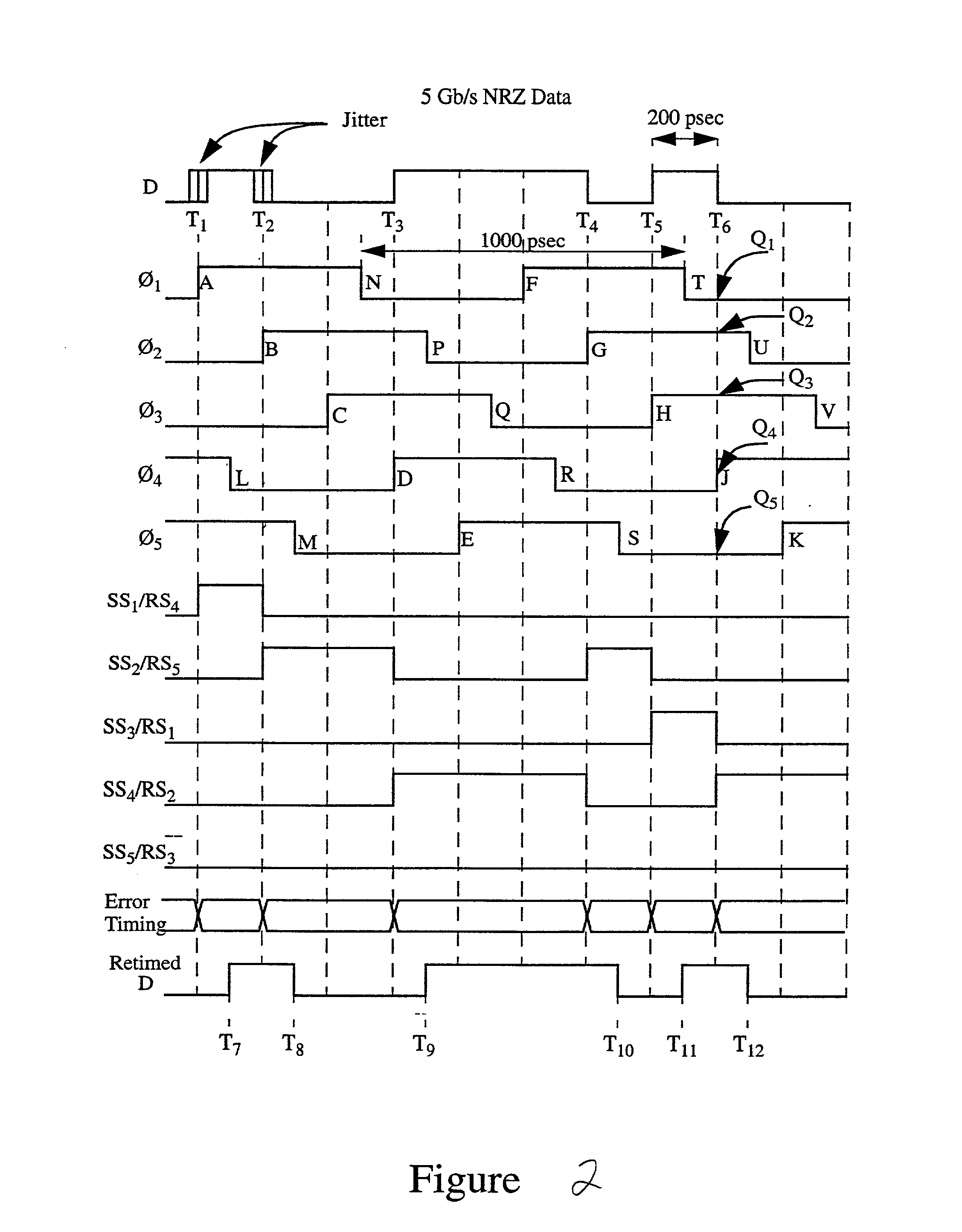Multiphase clock recovery using D-type phase detector
a phase detector and multi-phase clock technology, applied in the field of electronic clock circuits, can solve the problems of significant power density and/or power dissipation, and the limitations of cmos technology, and achieve the effect of limiting the speed at which clock recovery can be accomplished
- Summary
- Abstract
- Description
- Claims
- Application Information
AI Technical Summary
Benefits of technology
Problems solved by technology
Method used
Image
Examples
Embodiment Construction
[0044] The present invention provides an improved method and system for extracting a clock signal from a serial data stream. In one embodiment, the invention uses a multiple-phase subharmonic clock from a non-return-to-zero (NRZ) stream to retime and deserialize the data. In particular, the implementations described below use a 5-phase one gigahertz (GHz) voltage-controlled oscillator (VCO), and either a 5-phase D-type phase detector or a 5-phase self-correcting phase detector configured in a phase-lock loop (PLL), to recover the clock and retime a 5 gigabit per second NRZ data stream. Those skilled in the art will appreciate, however, that the specific implementations disclosed herein are not to be construed in a limiting sense. For example, the invention could be used for clock reduction factors other than 5, e.g., 7, 9, 11, etc., for single-rail rings oscillators, or 4, 6, 8, etc., for differential ring oscillators, or 4 for quadrature oscillators.
[0045] With reference now to the...
PUM
 Login to View More
Login to View More Abstract
Description
Claims
Application Information
 Login to View More
Login to View More - R&D
- Intellectual Property
- Life Sciences
- Materials
- Tech Scout
- Unparalleled Data Quality
- Higher Quality Content
- 60% Fewer Hallucinations
Browse by: Latest US Patents, China's latest patents, Technical Efficacy Thesaurus, Application Domain, Technology Topic, Popular Technical Reports.
© 2025 PatSnap. All rights reserved.Legal|Privacy policy|Modern Slavery Act Transparency Statement|Sitemap|About US| Contact US: help@patsnap.com



